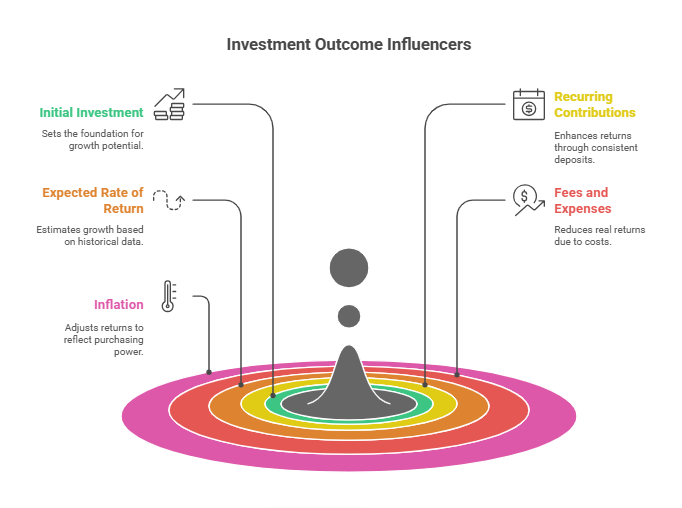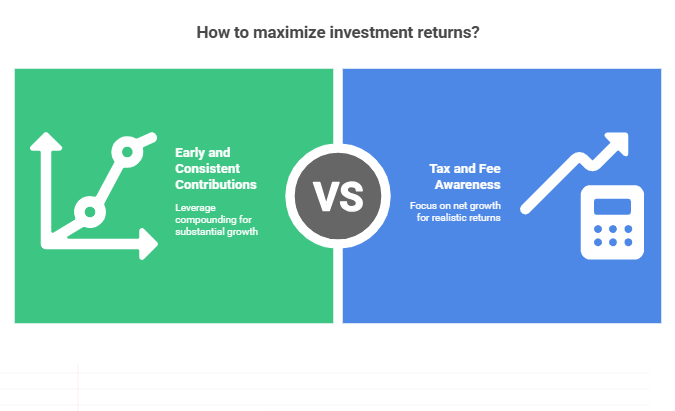
Calculate Your Way to Success with an Investment Cost Calculator
High-net-worth individuals seeking transparent ways to safeguard their assets often turn to an investment cost calculator to estimate fees, taxes, and projected returns. Such a resource can illuminate unseen expenses, highlight the impact of steadily compounding contributions, and underscore long-term growth potential. By focusing on measurable data, investors are better positioned to make decisions that align with their wealth management strategies.
Understand Investment Cost Calculators

Financial experts frequently cite the value of these specialized tools, which help project how an investment might grow over time. According to Finhabits, effective calculators consider initial contributions, monthly deposits, compound interest, fees, inflation, and even anticipated annual returns. Investors who consistently track each of these components gain a clearer sense of their net gains versus costs.
Meanwhile, Ramsey Solutions points to historical data showing that the Standard & Poor’s 500 index often averages a 10 to 12 percent annual return over 30 years. By capturing realistic numbers, calculators can show how shifting just one variable—such as increasing contributions—might transform results significantly over time.
Explore Key Variables
An investment cost calculator pulls together several core inputs to provide a snapshot of potential outcomes:
- Initial Investment: This starting amount can set the tone for growth over the investment’s lifespan.
- Recurring Contributions: Regular deposits bolster returns, especially when coupled with compounding.
- Expected Rate of Return: Any rate used should account for historical averages and conservative estimations.
- Fees and Expenses: Advisor fees, fund expense ratios, or platform costs have a notable impact on real returns. Some investors also explore whether these are tax-deductible by reading are investment management fees tax deductible.
- Inflation: Factoring in inflation reveals the purchasing power of projected returns, preventing an overestimation of future money.
By adjusting these elements, investors can see how different scenarios play out—everything from mild market fluctuations to varied tax positions.
Compare Tools And Costs

Different calculators each have strengths, whether they are basic fee estimators or comprehensive solutions. Data from LenderKit indicates that some calculators, such as those focusing on real estate crowdfunding, highlight the significance of property-related expenses and potential rental returns. Others, like the resources on Calculator.net, apply broader variables to a range of assets, including stocks, bonds, or commodities.
Still, professional guidance often goes beyond what a tool alone provides. Wealth managers might offer advanced strategies for mitigating taxes and structuring portfolios for long-haul results. Those who wish to explore advisor fees may find it helpful to review cost of a financial advisor or how much does a financial advisor cost.
Incorporate Strategic Steps

Start Early And Contribute More
The power of compounding can be substantial, as illustrated by Finhabits, which shows how an initial lump sum plus consistent monthly deposits can exceed $600,000 with enough time. Increasing contributions gradually, even by modest amounts, often leads to oversized gains down the road.
Consider Tax And Fee Implications
Return percentages can be deceptive if they do not reflect after-tax yields. The Paladin Registry notes that high federal or state tax brackets reduce real gains. Assessing these factors in a calculator can help investors shape their strategy to focus on net growth instead of headline returns.
Answer Common Questions

Many investors share five frequent concerns about an investment cost calculator: how it calculates fees, whether it incorporates taxes, if it accounts for inflation, how it treats compounding frequency, and which time horizon offers the most accurate snapshot.
Beyond these questions, some opt to tailor different scenarios in a single tool. Others diversify by consulting multiple calculators to confirm results or to glean fresh insights into their portfolio composition.
Summarize Key Takeaways
An investment cost calculator offers a valuable window into how fees, time horizons, and compounding might shape long-term returns. By capturing realistic inputs, high-net-worth individuals can better gauge how shifting one factor—like contribution size or risk level—alters their overall picture. In some cases, verifying fees through a specialized resource, such as the mutual fund expense ratio calculator, can be beneficial. Ultimately, staying attentive to taxes and upcoming financial goals helps investors maintain a clearer path toward preserving and growing their wealth.
Recent Posts
Financial Advisors in Los Angeles to Consider
Finding the right financial advisor can be a pivotal step...
Financial Advisors in New York to Consider
Selecting the right financial advisors in New York can play...





